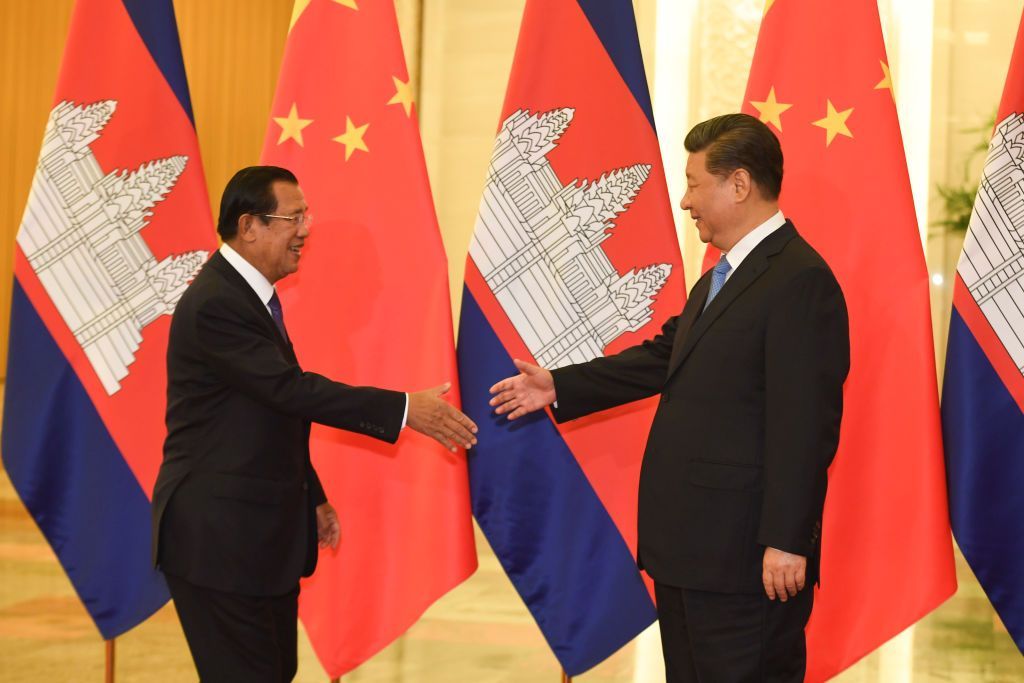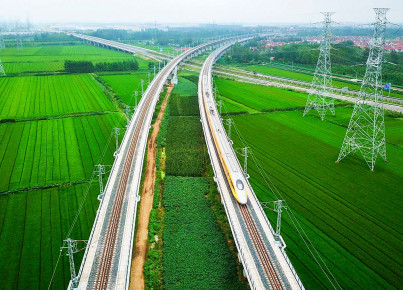As Cambodia strengths the ties with China, US express concerns about what this means for the region
On October 2nd, CSIS's Asia Maritime Transparency Initiative published a satellite imagery of a demolished US-built facility at Ream Naval Base, Cambodia. The building previously was the Tactical Headquarters of the National Committee for Maritime Security, and it served as the center for commanding, controlling, and coordinating multi-force operations. The demolition raised the year-long rumor of Chinese access to the area, and whether this means Cambodia will grant China basing privilege at Ream.
The concern stemmed from a report published by the Wall Street Journal back in July 2019, stating that Cambodia and China had signed a secret agreement allowing Chinese armed forces to use a Cambodian navy base. The early draft of the agreement – which was claimed to have been seen by unnamed US officials – would allow China to use the base for 30 years, with an automatic renewal every ten years. The agreement would also enable People’s Liberation Army to post its military personnel, store weapons, and dock their warships.
Aside from the demolition of the Ream Naval Base, the surrounding areas have also been leased by several Chinese companies for the development of a $16 billion resort, alongside with the construction of the Dara Sakor Airport – which is supposed to become the largest in Cambodia. The airport’s infrastructure itself raised a few questions. Evidence gathered showed that the length of the airport’s runaway exceeds the need of a regular aircraft – creating aspeculation that it might not be used solely for commercial purposes, but for military as well.
Despite myriads of questions and comments, the Cambodian government denied these allegations. Prime Minister Hun Sen repeatedly declared that China has not been given exclusive rights to use the Ream Naval Base, as the Cambodian Constitution forbids the establishment of foreign military bases. In addition, he underlined that warships from all nations – including those from the United States – are welcome to dock. However, the response from China was limited. In an interview, China’s Foreign Ministry Spokesman Geng Shuang said «As I understand it, the Cambodia side denied this». Yet, he refused to clarify whether this means China also denied the claim – he focused on the nature of China-Cambodia relations instead, which he described as ‘open, transparent, mutually beneficial and equal’.
Regardless, strategic implications following this situation still put Washington on edge. If indeed a Chinese military base will be established in Cambodia, it will greatly shift the balance of power in Southeast Asia. Due to the strategic location of the base, it will allow China to extend its influence over the Strait of Malacca, one of the world’s busiest shipping routes. Simultaneously, China also has multiple projects in other countries: a military installation in Djibouti, ongoing construction of a deep-sea port in Myanmar, and a plan to invest in Sri Lanka as a part of the Belt and Road Initiative. According to experts, it is highly likely that China is trying to create a ring of infrastructure from the South China Sea to the Indian Ocean and East Africa in order to reinforce its position among global powers.
Furthermore, facts on the ground show that out of the ten ASEAN member states, the Cambodian government has been the most welcoming towards China. At the same time, China is by far Cambodia’s largest trading partner and source of foreign direct investment – with its bilateral trade volume reaching $7 billion last year. Both countries have recently signed a Free Trade Agreement (FTA) – making this Cambodia's first bilateral FTA. On the contrary, Cambodia’s relationship with the United States seemed to have grown increasingly tense, due to Washington’s critical approach towards Cambodia’s domestic affairs. However, the United States seemed to have readjusted their strategy as of this year. Rather than conducting direct interventions, under the leadership of US Ambassador to Cambodia Patrick Murphy, their latest method seems to be more diplomatic, flexible, and friendly.
Although it is far too early to see what’s in store for the three countries, we know this much is true: both the United States and China are seeking to have a good relationship with Cambodia. Currently, China seems to have succeeded in doing so, as the ties between the two nations continue to flourish. Nevertheless, the future also looks promising for the United States as they proceed with their newest diplomatic strategy, working hard to ‘reset’ their relations with Cambodia. Undoubtedly, the world will see moreof the development of US-China-Cambodia relations in the coming months – one that hopefully turns out tobe mutually beneficial for all parties.
By Rizka Diandra
Translated by Andrea Passannanti






